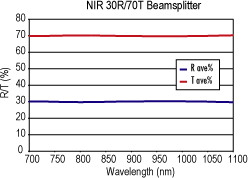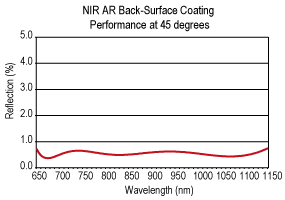
 TECHSPEC® components are designed, specified, or manufactured by Edmund Optics. Learn More
TECHSPEC® components are designed, specified, or manufactured by Edmund Optics. Learn More
Les Lames Séparatrices Visible et Proche IR TECHSPEC® sont idéales pour les systèmes d’imagerie à double grossissement ansi que pour combiner les faisceaux laser à faible puissance. Ces séparateurs de faisceau offrent la combinaison optimale de verre poli de haute qualité optique et d’un substrat d’épaisseur minimale. Les traitements diélectriques à large bande offrent une transmission maximale, idéale pour la réduction d’images fantômes, et ont une perte d’énergie beaucoup moins importante que les traitements métalliques. Les Lames Séparatrices Visible et Proche IR TECHSPEC® sont traitées de multi-couches antireflets (AR) aux surfaces arrières, qui réduisent les réflexions arrières à moins de 1,0% pour chaque gamme de longueur d’onde. Pour faciliter l'identification, la face traitée du séparateur de faisceau est marquée d'un point noir.



| Titre | Comparer | Numéro de Stock | Prix | Achat | |
|---|---|---|---|---|---|
| Kit de Lames Séparatrices VIS, 25 mm de Diamètre | #83-388 | €498,00 Demande de Devis |
|
||
| Kit de Lames Séparatrices IR Proche, 25 mm de Diamètre | #83-956 | €498,00 Demande de Devis |
|
1-800-363-1992
ou consulter les numéros d’autres pays
facile à utiliser
entrer les numéros de stock pour commencer
Copyright 2025 | Edmund Optics, Ltd Unit 1, Opus Avenue, Nether Poppleton, York, YO26 6BL, UK
L'entreprise Edmund Optics GmbH en Allemagne agit comme un mandataire d'Edmund Optics Ltd au Royaume-Uni. Le titulaire du contrat est Edmund Optics Ltd au Royaume-Uni.